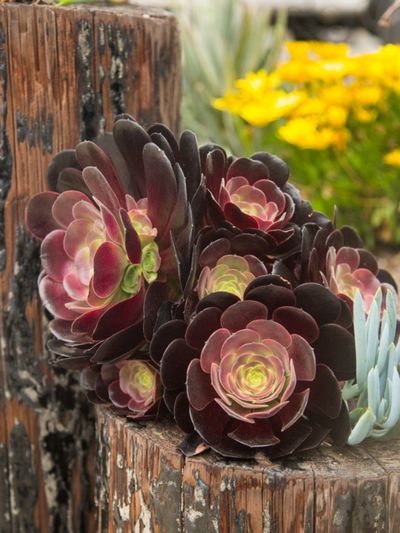About Black Knight Echeveria
Echeveria plants abound in variety, and their ease of care makes them popular succulent plants to grow. The new growth in the center of Black Knight rosettes provides a bright green contrast to the dark outer leaves. In late summer and fall, Black Knight succulents produce colorful, coral-red blooms atop slender, arching stalks. As an added benefit, deer and bunnies tend to steer clear of Black Knight plants. Native to South and Central America, Black Knight echeveria is suitable for growing in the warm climates of USDA plant hardiness zones 9 or above. The plant won’t tolerate frost, but you can grow Black Knight echeveria indoors, or grow them in pots outdoors and bring them inside before the temperature drops in fall.
Growing Echeveria Black Knight Plants
Outdoors, Black Knight plants prefer poor to average soil. Indoors, you plant Black Knight in a container filled with cactus potting mix or a mixture of regular potting mix and sand or perlite. Black Knight succulents prefer full sunlight, but a little afternoon shade is a good idea if you live in a hot climate. Intense afternoon sunlight may be too intense. Indoors, echeveria Black Knight needs a sunny window, but no direct sunlight during hot afternoons. Water the soil or potting mix and never let water sit in the rosettes. Excessive moisture on the foliage can invite rot and other fungal diseases. Water indoor Black Knight succulents deeply until water trickles through the drainage hole, then don’t water again until the soil feels dry to the touch. Be sure to pour extra water out of the drainage saucer. Cut back on watering if the leaves look shriveled or wilted, or if the plants are dropping leaves. Decrease watering during the winter months. Echeveria Black Knight plants don’t require a lot of fertilizer and too much can burn the leaves. Provide a light dose of a slow-release fertilizer in spring or apply a very weak solution of water-soluble fertilizer occasionally throughout spring and summer. Remove lower leaves from outdoor Black Knight plants as the plant matures. Older, lower leaves may harbor aphids and other pests. If you bring Black Knight succulents indoors in autumn, return them to the outdoors gradually in spring, beginning in light shade and slowly moving them into the sunlight. Drastic changes in temperature and sunlight create a difficult adjustment period.
